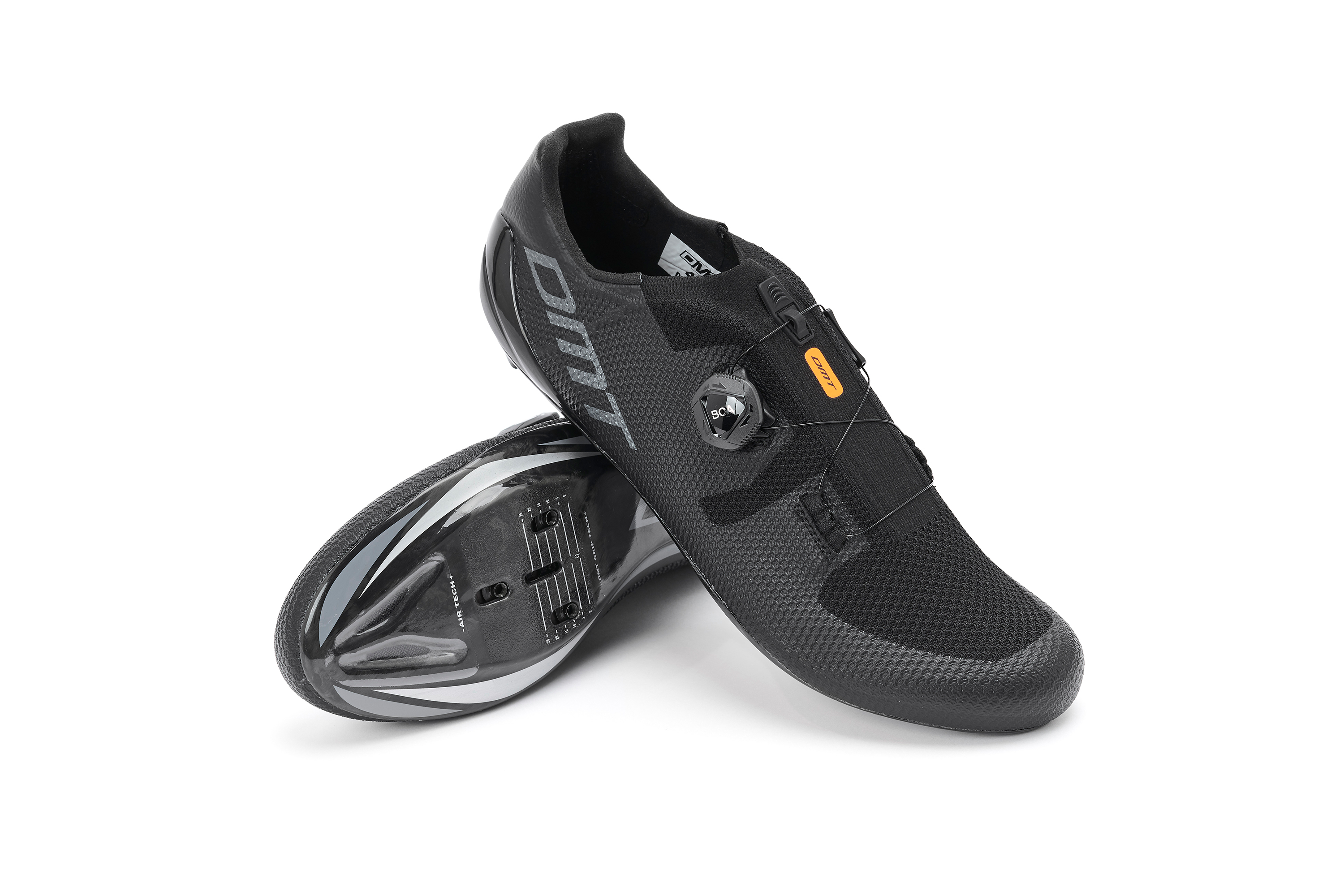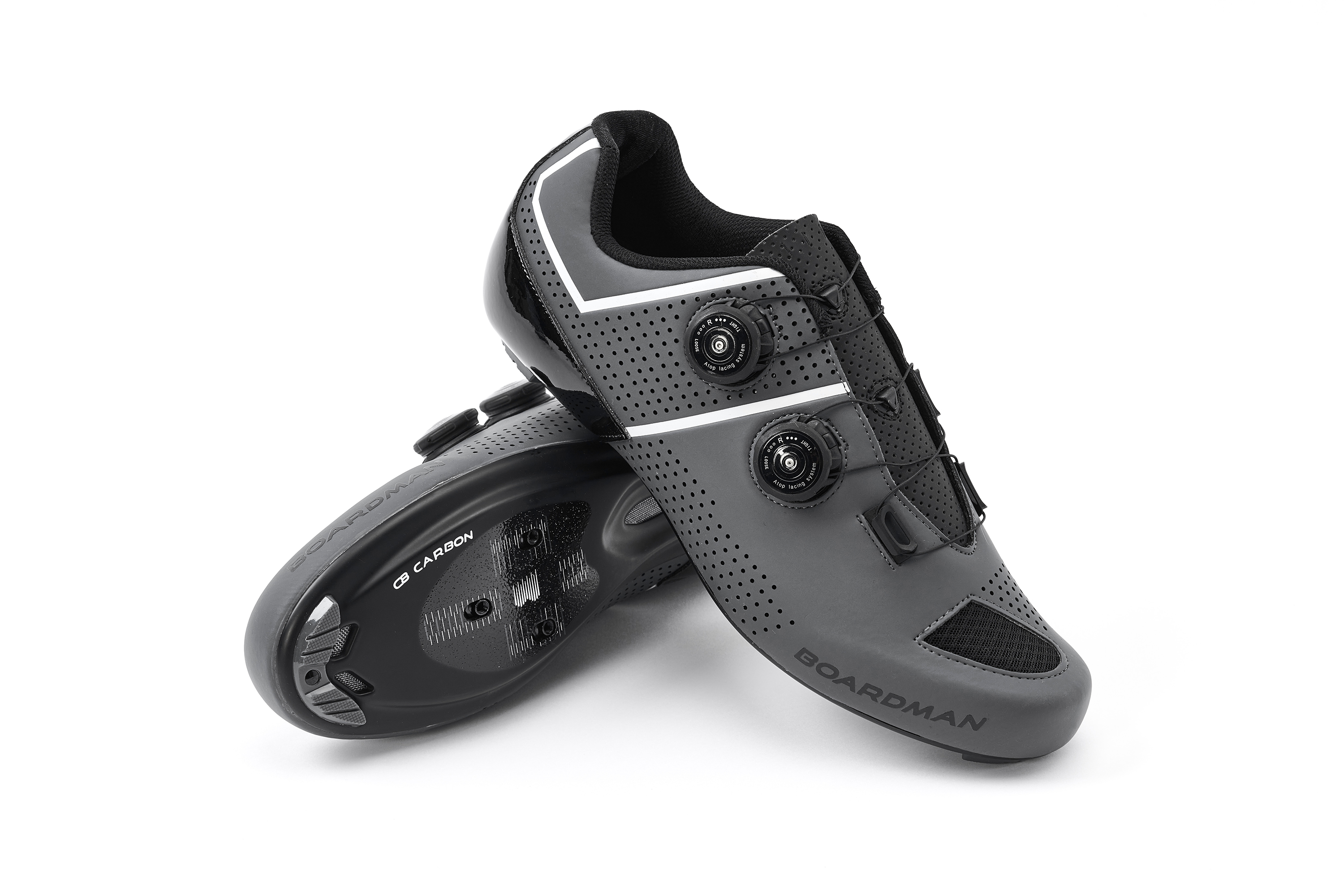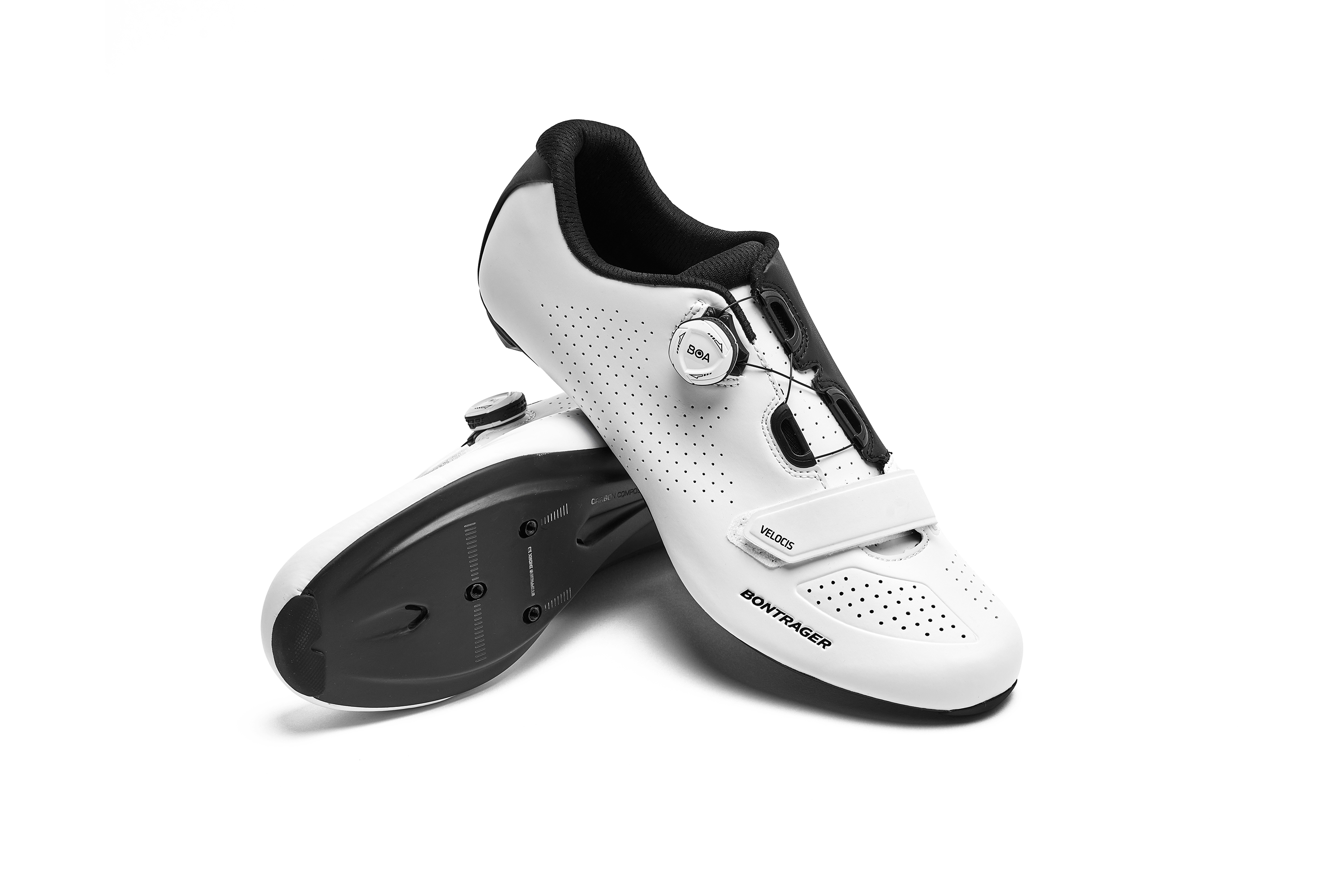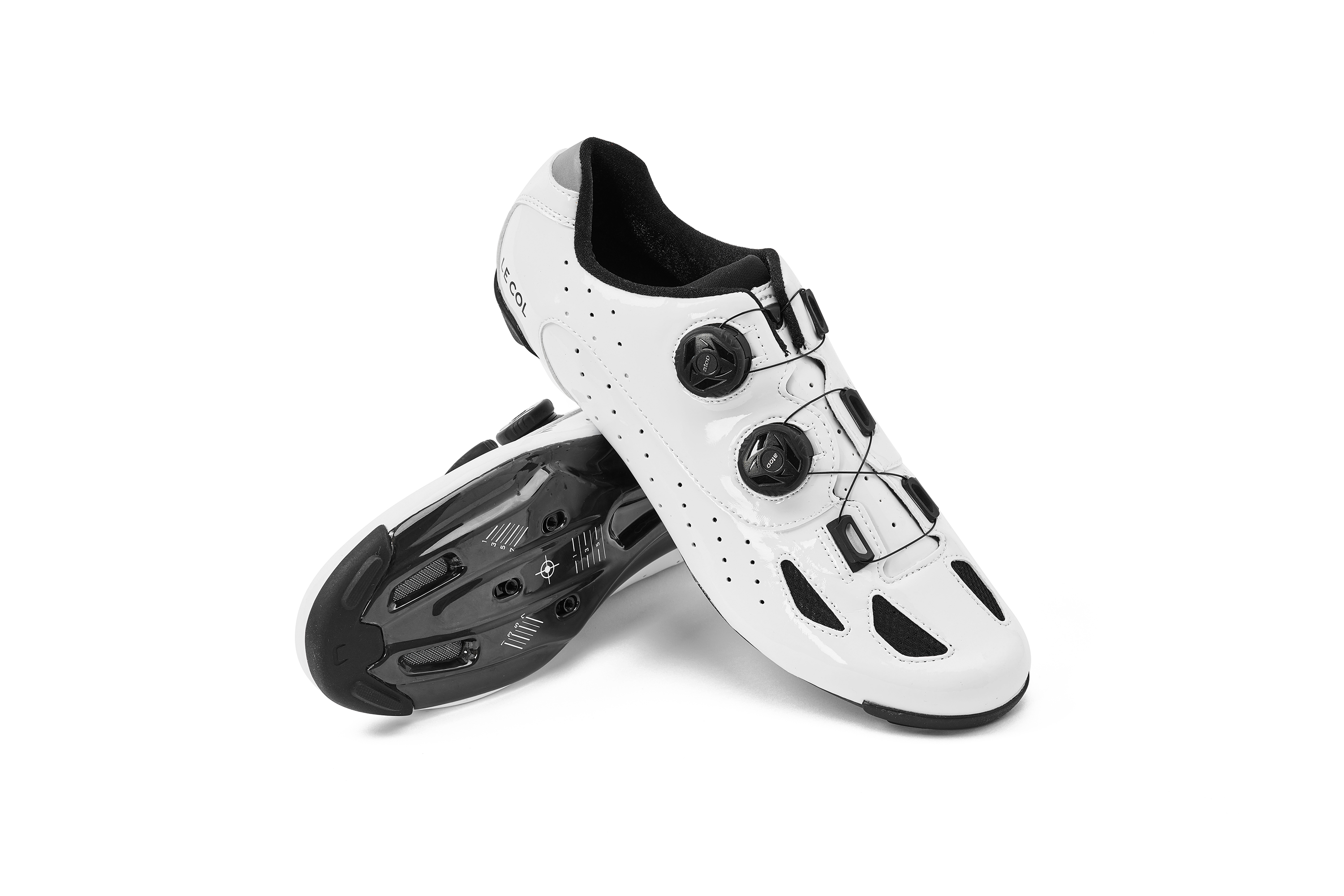Best road bike shoes reviewed for 2025
For year-round mile-munching triathletes can't go wrong with a robust pair of road bike shoes. Here, Jack Sexty puts 11 pairs to the test

If you’re putting in plenty of outdoor miles year-round and can only budget for one pair of cycling shoes, a pair of the best road bike shoes will probably serve you better than triathlon bike shoes in most scenarios.
With no transitions to think about, the best road shoes will prioritise a secure and comfortable fit, with a more robust build than triathlon-specific bike shoes.
The 10 pairs in this grouptest range from entry- level options, invariably with nylon soles and basic synthetic uppers, through to high-end shoes with full carbon or carbon-injected soles for more stiffness.
The latter will also have more technical uppers designed to hug your foot perfectly while being breathable enough for warm rides. All shoes are unisex, and our test pairs are all size 45.
Tried and tested: best road cycling shoes at a glance
Best overall: Boardman Carbon | Buy now from Halfords
Best for ventilation: DMT KR3 | Buy now from eBay
Highly-rated: Fizik R4 Tempo Overcurve | Buy now from Cycle Store
Best budget road bike shoes: Van Rysel ROADR 520 | Buy now from Debenhams
Best road bike shoes rated and reviewed
Highly-rated
Fizik R4 Tempo Overcurve

220 Triathlon verdict
Great-looking, robust all-rounder. Score: 90%
Pros
- Great fit
- Tough upper
- Boa dial works well
Cons
- Sole isn’t full carbon
- £219.99 / $209.99
There’s substance to match the style on these fantastic earthy grey/green R4 Tempo Overcurves; the name referring to the asymmetric shape that Fizik says better conforms to your foot, which I agree provided a superb fit.
The single BOA IP1 dial was plenty enough to get fast and secure closure, with the staggered ‘collar’ of the shoe wrapping around my ankles perfectly.
The upper is very robust and stood up to every type of weather I could throw at it. Fizik claims the polyurethane-laminated material layered over the top of comfy mesh should also reduce energy loss and provide extra support.
The carbon-injected sole is rated seven out of 10 for stiffness, which Fizik says is at home on weekend group rides, daily training or gran fondos.
Sundried Road Cycle Shoes
Buy now from Sundried (£50)

220 Triathlon verdict
Basic, yet solid and affordable training shoe. Score: 74%
Pros
- Simple design
- Reasonably priced
Cons
- Not that easy to get on
- Flexy soles
- £130 / $160.80
British multisport brand Sundried claims these affordable kicks will be ‘the best cycle shoes you’ve ever owned’, and while that wasn’t to be the case, for the price they’re adequate for your off-season training.
Weighing just over 300g per shoe on my scales the fit is quite narrow, which meant there wasn’t much room for my toes at the front of the shoe. But the two-way edging at the back cupped my heels securely.
This made up for a bit of a struggle getting them tight, as I found the dial slipped a little against the quite flimsy tongue.
Ventilation is good with some small mesh sections and strategically-placed holes providing plenty of breathability, while the insole also has drainage holes for a quick-drying ride. Finally, the soles aren’t overly stiff, with a bit of flex evident on big inclines.
Best for ventilation
DMT KR3

220 Triathlon verdict
Highly breathable shoe with some impressive tech. Score: 85%
Pros
- Well ventilated
- Very light
- Carbon sole
Cons
- Not cheap
- Unsuitable for winter
- £240 / $340
DMT claimed to have produced the first bike shoe with a fully knitted upper back in 2018 and the same tech features throughout here.
The KR3 model sits below the KR1 and new range-topping KR0, yet still features a carbon sole and knit technology to bring the weight down to a feathery 250g per shoe.
Like the KT1 triathlon shoes, one BOA IP1 dial felt adequate for tightening as the upper really hugs your foot in the right places.
DMT credits its technical yarns with variable thicknesses for the sock-like sensation you feel in the KR3, and on test rides my feet were happy over many miles.
A super-stiff full carbon sole makes them race ready, and in the rain the knit dries fairly quickly, though I’d hesitate to use them in really bad weather.
If I could budget for a luxury summer road shoe, the KR3 would be near the top of my list.
Best overall
Boardman Carbon

220 Triathlon verdict
Fantastic shoes that are incredibly good value. Score: 91%
Pros
- Unbeatable value
- Adjustable dials
- Decent venting
Cons
- Sole could be stiffer
- A little warm
- £85 (UK only)
With a full carbon sole, two adjustable dials and plenty of ventilation for just £85, the Boardman Carbon seems almost too good to be true. And although it’s not the most luxurious-looking, my reservations were unfounded as this shoe is the real deal.
The sole isn’t as stiff as the higher-grade carbon found on offerings from Le Col and DMT, but it dealt with everything I threw at it during testing. There’s venting in the soles and plenty of holes on the synthetic upper.
They’re not the most breathable and I’d perhaps ask for a little more venting on the upper, but they’re fine for mild and warm weather.
Two ATOP dials allow you to get the ideal amount of tension, while the tongue wraps around the foot nicely. These shoes bear the name of a gold medal-winning Olympic legend, and they deservedly take the top spot on the podium in this grouptest of the best road bike shoes.
Bontrager Velocis

220 Triathlon verdict
Light and balanced, but at the top end of the market. Score: 77%
Pros
- Light
- Versatile sole
Cons
- Not the coolest
- Quite expensive
- £199.99 / $184.99
Aimed more at sportives and training rather than all-out racing, Bontrager’s Velocis is one of the lightest shoes on test at just 243g each on my scales.
The sole is a carbon/fibreglass composite, which provides a medium stiffness that will be fine for everyday training and fast commuting.
Equipped with a BOA IP1 dial and additional Velcro strap for easy adjustability, the tongue underneath the closure system is quite thick, making my midfoot feel a little claustrophobic.
The perforated upper aims to ‘allow for increased breathability and comfort’, however I’d ideally have liked some mesh sections to enhance the breathability, as on hot days my feet overheated slightly.
If you find too much shoe stiffness harsh going but are after the lightest and affordable option possible, then the Velocis will fit the bill.
Bont Cycling Motion

220 Triathlon verdict
Another great value shoe, but straps are a little old hat.Score: 85%
Pros
- Roomy, wide fit
- Great value
- Adequately stiff
Cons
- Straps are quite old school
- £79.95
The Motion is the cheapest shoe on test and also in Bont’s range. So what’s missing?
First up, there’s no heat-mouldable chassis like you’ll find on Bont’s other shoes. And there are just three Velcro straps supplied to tension the shoe, which is acceptable at this price point but just don’t work as well as dials.
Strap styles are also starting to look a bit dated. But otherwise, there’s only good things to say about this shoe. The fibreglass sole is impressively stiff, and the profile is low which makes you feel really connected to the pedals.
They’re also very roomy, so will suit those with wide feet, and there’s plenty of ventilation throughout.
If you’re just starting your triathlon journey and really want a do-it-all shoe, the wide opening you can get from fully loosening the straps would also be useful for swift triathlon transitions.
Giro Regime

220 Triathlon verdict
Slightly odd shape, but otherwise a highly comfortable shoe. Score: 73%
Pros
- Adjustable cleat bolt holes
- Good fit from dual Boa dials
- Sole feels stiff for the price
Cons
- Unusual shape
- £229.99 / $240
Giro’s Regime has a unique upper made from what the brand calls ‘ultralight monofilament mesh Synchwire’.
It’s noticeably different to many of the other shoes on test, which have more standard synthetic uppers, but we found it very light and airy, although a little less resistant to wet weather.
Two BOA L6 dials are appreciated at this price-point, providing a secure fit throughout testing.
The composite sole was noticeably stiffer than the entry-level shoes on test, and the extra 5mm of adjustment in the cleat fixings is a nice extra touch.
Though the toebox is narrow, I found the midfoot-to-heel section unusually wide, meaning I had to adjust my cleats slightly to avoid the inside of the shoe brushing my cranks.
Although I couldn’t quite get on with the Regime’s shape, it’s still feature-packed with some impressive upper innovation.
Best budget road cycling shoe
Van Rysel RoadR 520

220 Triathlon verdict
Excellent budget shoe…just a rattle holding it back. Score: 86%
Pros
- Fantastic value
- Excellent comfort
Cons
- Minimal fore/aft adjustment
- Two-bolt cleat came loose
- £89.99 (UK only)
Decathlon’s in-house cycling brand Van Rysel has delivered some quality bargains since its inception, and the ROADR520 is one of them.
Its one ATOP dial with an additional Velcro strap provides enough tension, but the composite sole will be better suited to those who find full carbon too rigid.
The upper is very comfortable, especially the tongue that feels soft against the foot. Underneath you’ll find holes for two and three bolt cleats, the former being useful if you want to use them for commuting.
Unfortunately, the two-bolt insert came loose during testing which created an annoying rattle, but with some bodging I got it secure.
You miss out on some extra cleat fore/aft offered by some of the pricier shoes on test, but otherwise I found few compromises. If you want an affordable pair for year-round use, the ROADR 520 should be considered.
Specialized Torch 1.0

220 Triathlon verdict
Comfy entry-level shoe, but outshone by rivals. Score: 78%
Pros
- Solid performance
- Decent price
Cons
- Heavy
- Doesn’t excel anywhere
- £99.99 / $120
The Torch 1.0 is the most wallet-friendly road shoe from Specialized, with a stiffness rating of six out of 15 on the Specialized stiffness scale.
But it’s also one of the heaviest on test at 327g per shoe, with the quite bulky synthetic upper and lining adding to the few extra grams, yet proving to be sturdy and secure over the test period.
A BOA L6 dial with additional Velcro strap secures the shoe, spreading the pressure across the foot adequately, and I found the nylon sole more flexible than I’m used to on very hard sprint efforts.
Like Sundried’s offering, there’s nothing wrong with the Torch 1.0, and it performed as I expected for a shoe at the £100 price point, but there are no absolute standout features. Instead, you’re getting a functional training shoe that will do the job.
Le Col Pro Carbon

220 Triathlon verdict
Super stiff shoe, but PU leather might divide opinion. Score: 88%
Pros
- Full carbon sole
- Excellent comfort
- Low weight
Cons
- PU leather uppers are shiny and not that breathable
- Costly
- £275 / $350
The Le Col Pro Carbon has a full unidirectional carbon sole which proved the stiffest on test – not unsurprisingly as it’s the most expensive offering.
There wasn’t a hint of flex to be found, which means maximum power transfer for sprints and climbs.
The upper is the only on test to be made from PU leather and although the shiny looks aren’t for everyone, it’s practical because you can just wipe the dirt straight off after rides in adverse weather conditions.
The kicks are also very comfortable and didn’t fold or crease when I tightened the two ATOP dials. Plenty of holes and mesh sections offer enough breathability, although I did find my feet got a little sweatier under the PU than some of the lighter synthetic uppers on test.
These shoes are also light at 270g each on our scales, and worth the outlay if you’re after a pair for racing as well as off-season training.
Best road bike shoes: Our overall verdict
With the road cycling shoes on test spanning a wide range of price points, we judged each pair primarily on their own merits, while ensuring quality, value and standout features were factored into the equation.
Thankfully none were bad, with shoes from Bontrager, Giro and Le Col finding themselves lower down the list for their higher prices compared to the competition.
Fizik’s Tempo Overcurve is pushing £200, but achieved a higher score thanks to the quality construction and suitability for year-round use, while DMT’s KR3 impressed us with its unique knitted technology.
Niche yes, but still a top performer. Sundried’s debut road shoe is better than average for £90, but has been pitched against three of the best budget road shoes in the Boardman Carbon, Van Rysel ROADR 520 and Bont Motion.
While the Boardman isn’t the out-and-out best or most luxurious cycling shoe money can buy, for the price it can’t be beaten.
You’ll usually spend north of £200 before you get carbon soles and multiple dials, but Boardman has ticked both boxes on a shoe costing just £85, rightfully earning it ‘best on test’.
How we tested
All of the road bike shoes featured here have been tested by former 220 Triathlon staff writer and current Road.cc editor Jack Sexty.
Each shoe has been tested on a range of rides including steady long sessions and rides with intense climbing or sprinting.
During testing, Jack analysed each shoe against a range of criteria including stiffness and power transfer, comfort, weight, breathability, value and fit.
Anything that scores over 90% is genuinely top-class, while a score of 80-90% also represents a road bike shoe that comes very highly recommended.
Scores between 70-80% mean the shoe may have a couple of flaws, but still has a lot of positives, while anything below 70% means we weren’t overly impressed and proceed with caution.
Need a new pair of pedals to go with your new cycling shoes? Take a look at our list of the best clipless pedals for inspiration.
What to look for in the best road bike shoes
Within the road shoe category, there are numerous variations depending on what you’re primarily using them for.
Those made to excel on climbs and in warm weather will have light, airy uppers with an emphasis on keeping the weight down, while shoes designed to hack winter weather will have tougher, synthetic, sometimes even leather, uppers.
Of course, for temperatures in single digits it’s extremely wise to add thermal overshoes on top to keep your feet toasty, no matter what type of shoe you go for.
Closure system
Some road bike shoes will have large velcro straps like triathlon bike shoes, but other cycling shoe closure mechanisms are more common. Boa dials and laces look sleeker and offer more adjustment.
Heel tab
Although you shouldn’t walk too far in cycling cleats, a heel tab or bumper is good to have when you do have to put your foot down. It provides grip lacking on slippery carbon soles and protects them from scuffs.
More premium models will have screw-in, replaceable heel bumpers.
Sole
Sole material will influence how stiff the shoe feels as you pedal. Glass fibre is the flexiest option, usually found on cheaper cycling shoes. Pricier models will use super-stiff full carbon. Mid-range options tend to mix the two.
Studies suggest a stiffer sole doesn’t improve power transfer. But some riders find a stiffer sole more comfortable and supportive.
Cleat position
Adjustable cleat bolt holes are a handy feature, if you’re prepared to pay extra for it. This means you can move the cleats further back, as many bike fitters recommend.
Ventilation
If you ride indoors or in warm weather, you’ll want ventilation. Perforated, mesh uppers and sole vents will keep your feet cooler.
Some shoes take breathability too warm for winter riding though, even when covered in overshoes.
Fit
Many cyclists wear ill-fitting road bike shoes. We’d recommend trying them on before buying if you can. Or even better, book a shoe-fitting appointment at a quality bike fitter.
Many bike fitters will discount the shoe-fitting service if you buy a pair from them. And some have all the main brands available to purchase.




